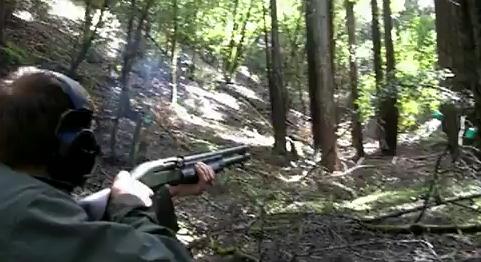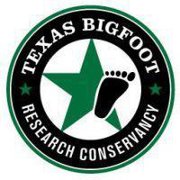
April 27, 2012

The time is now to take a stand. Killing, as an organizational stance by the Texas Bigfoot Research Conservancy (TBRC), is not acceptable to me.

The TBRC lists a Board of Directors, and a Board of Advisors.
It is rather strange to be a member of the Board of Advisors of the Texas Bigfoot Research Conservancy (TBRC), and not be asked for my opinion, insights, or thoughts on trying to kill an unknown species in the field. I now see that the TBRC came up with a policy without letting me know.
As of today, I am resigning from the Board of Advisors of the TBRC. I understand that earlier today, John Kirk also resigned. John’s short statement related that he quit due to the following reason:
They have adopted a pro-kill policy and I am against this….I cannot condone this kind of thing being done in the name of science.
I find it unfortunate that the members of the Board of Directors of the TBRC are out in the woods, seemingly and randomly, shooting at furry animate objects they feel they should kill to prove the existence of Bigfoot. Besides the unknown legal implications of such behavior (What if the species is found to be Homo? What if it is a human in a hairy suit?), I have been an open advocate of the live capture (telebiology), and non-killing of hairy unknown hominoids for decades.
There is no reason for me to be a figurehead member of a group of advisors who are not being asked for advice. I must resign from this group, immediately.
John Kirk resigned, and brought to my attention the group’s active pro-kill policy, as noted in The Echo Incident and Operation Endurance.
The following details are what is behind these incidents:
Statements made or reported as being made by Honobia, OK, resident Charles Branson at the Honobia Bigfoot Festival on 1 October 2011, concerning incidents that took place the previous July, contain inaccuracies. The basic facts are as follows.
The TBRC was on Mr. Branson’s property with his permission as part of Operation Endurance (OE). The group in place at the beginning of July, designated as the “Echo” team, was the fifth of ten teams to participate in OE. Subsequent events experienced by that team are referred to as the “Echo Incident” within the TBRC.
On 3 July 2011, at approximately 7:15 PM and under clear daylight conditions, Daryl Colyer, Board Member and Field Operations Director of the TBRC, encountered a sasquatch on the Branson property.
snip
Walking to the south, the creature was momentarily obscured by vegetation and was then visible through an eight to ten foot opening in the dense foliage, still approximately 25-30 yards from Colyer’s position. Using his Remington 1100 Tac-4 12 gauge auto-loading shotgun, loaded with 000 buckshot followed by slugs, he attempted to collect the animal for scientific analysis, firing all the rounds in rapid succession. Colyer then approached the spot where the animal had been, reloading as he walked, but found no body. Within a few seconds he heard the faint sound of an automobile engine starting. When Diaz arrived at the location of the encounter, Colyer directed him to investigate the automobile sound. Diaz found a container of iced tea on the ground approximately 50 yards down the path, but he could not determine a source for the engine noise.
All four members of the Echo team attempted to track and locate the animal until it was too dark to see. Although the ground in the area was covered with leaves and other debris, the trail left by the animal was evident until it reached the nearby rocky creek bed. There were clear signs of its travel through the forest, including where it stepped on and crushed a fallen branch that was left unharmed when stepped on by the TBRC investigators. The slugs Colyer fired were all found embedded in trees near where he saw the animal. The team was unable to find any other evidence of the animal or its fate before losing daylight.
The team departed for home the next morning. Shortly after reestablishing cell phone coverage, Mr. Branson contacted the team and informed them that his nephew and his nephew’s girlfriend had driven to the site the previous day. The nephew left his truck parked at the property gate and had begun to walk up the path toward the cabins when he heard what he mistook to be machine gun fire. He ran back to his truck and fled the area, apparently damaging his truck in the process. Colyer never saw or heard the truck prior to its departure, nor did he see or hear the two people. Their position, relative to Colyer’s, was to the west through the dense forest, while the animal Colyer was attempting to collect was to his southwest. Neither they nor their vehicle was ever in the line of fire.
Following the conversation with Mr. Branson, team members made contact with Branson’s son, a deputy sheriff in the area, and related the events to him. He advised contacting the County Sheriff’s Office, since the nephew had reported that he had been shot at with a machine gun by “druggies.” After communicating with the sheriff’s office twice, the matter was dropped. Upon learning of the damage to his truck, said to amount to $1200, the TBRC offered the nephew $2,000 to help offset the cost of repairs. The check was cashed a few days after it was sent. Following a break of approximately one week, the TBRC resumed Operation Endurance to its planned completion.
In December of 2010, TBRC Chairman Alton Higgins clearly stated on the TBRC web site that the organization would “not stand in opposition to individuals—within or outside the TBRC—or groups supporting and/or actively pursuing efforts to obtain a specimen.” He went on to add, “As a field biologist I have always indicated that I supported collecting a specimen for documentation and study.” He went on to explain, “Biologists are trained to think in terms of, and to care about, populations. Collection of a voucher specimen is a way of protecting the population, from my perspective. It is not immoral, even if there are those who disagree for various emotional reasons.” Those interested can read the position statement in its entirety here.
After reading this, I had no choice but to resign. I shall be reexamining my “board of advisor” memberships in all groups now.
About Loren Coleman
Loren Coleman is one of the world’s leading cryptozoologists, some say “the” leading living cryptozoologist. Certainly, he is acknowledged as the current living American researcher and writer who has most popularized cryptozoology in the late 20th and early 21st centuries.
Starting his fieldwork and investigations in 1960, after traveling and trekking extensively in pursuit of cryptozoological mysteries, Coleman began writing to share his experiences in 1969. An honorary member of Ivan T. Sanderson’s Society for the Investigation of the Unexplained in the 1970s, Coleman has been bestowed with similar honorary memberships of the North Idaho College Cryptozoology Club in 1983, and in subsequent years, that of the British Columbia Scientific Cryptozoology Club, CryptoSafari International, and other international organizations. He was also a Life Member and Benefactor of the International Society of Cryptozoology (now-defunct).
Loren Coleman’s daily blog, as a member of the Cryptomundo Team, served as an ongoing avenue of communication for the ever-growing body of cryptozoo news from 2005 through 2013. He returned as an infrequent contributor beginning Halloween week of 2015.
Coleman is the founder in 2003, and current director of the International Cryptozoology Museum in Portland, Maine.
Filed under Bigfoot, Breaking News, CryptoZoo News, Men in Cryptozoology, Sasquatch, Women in Cryptozoology